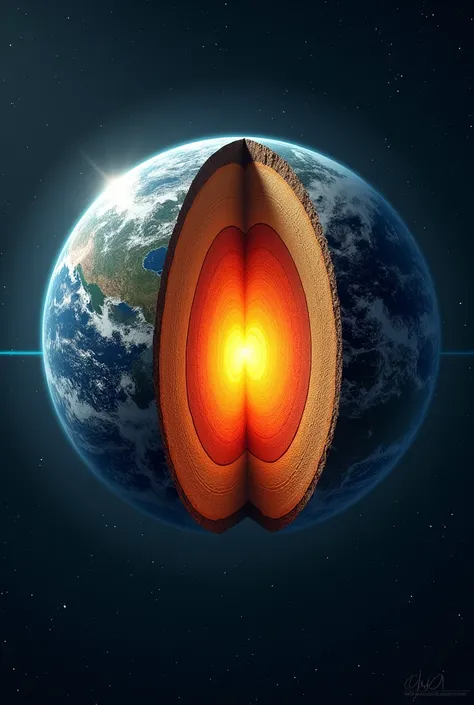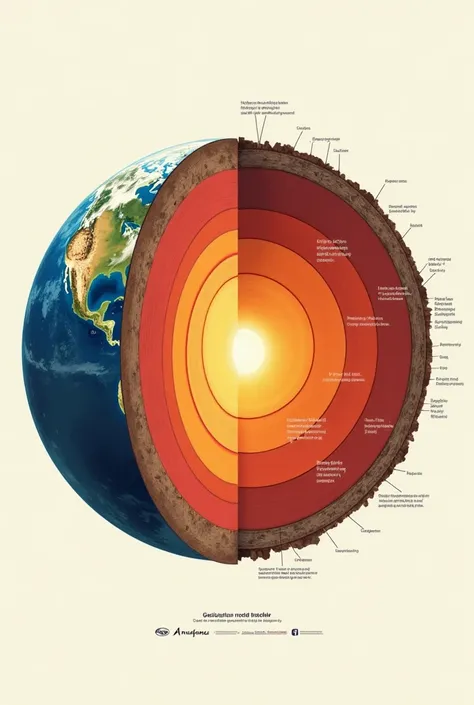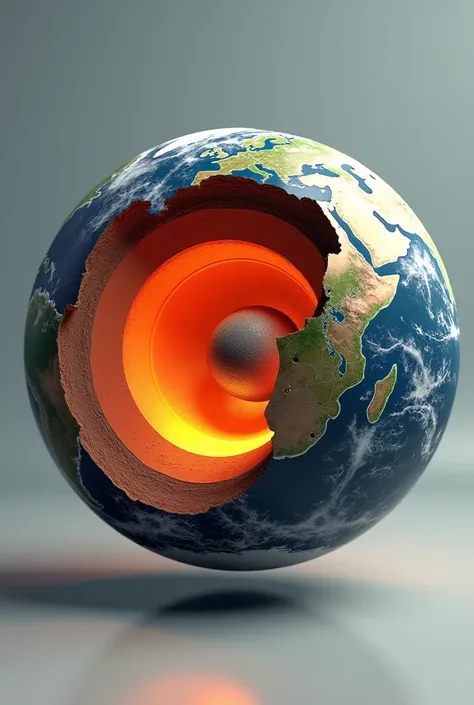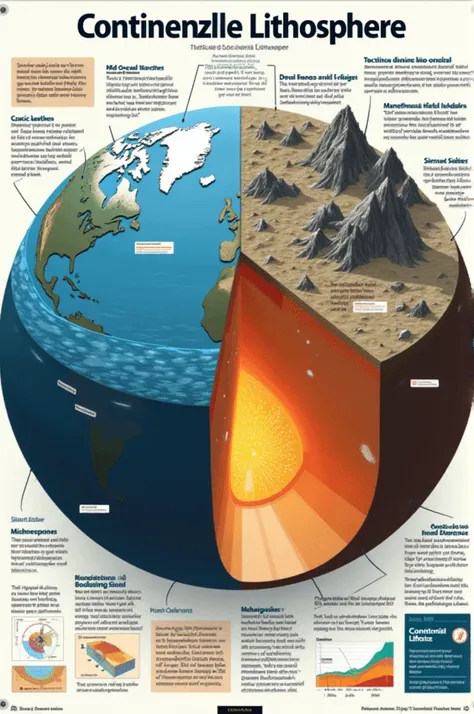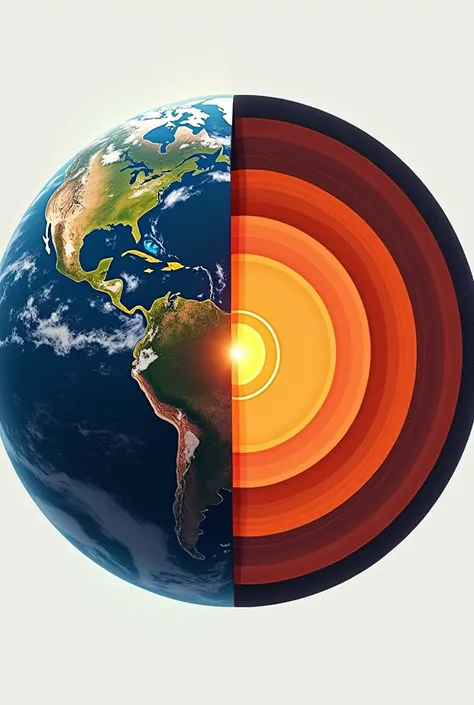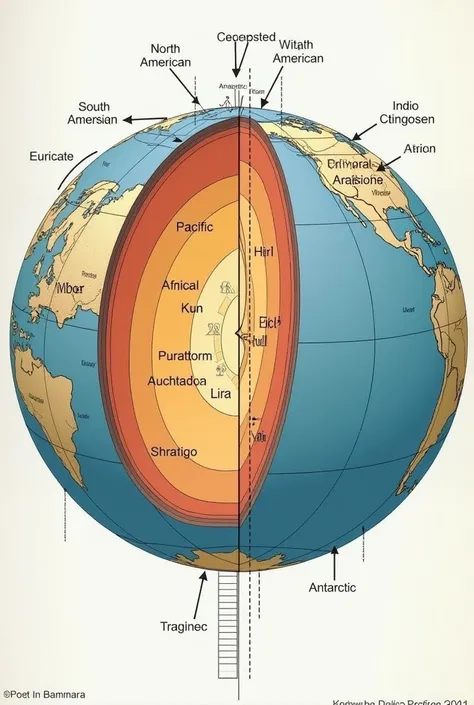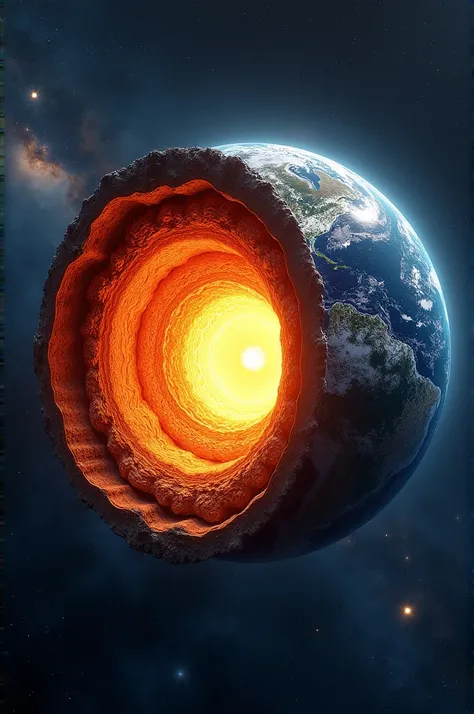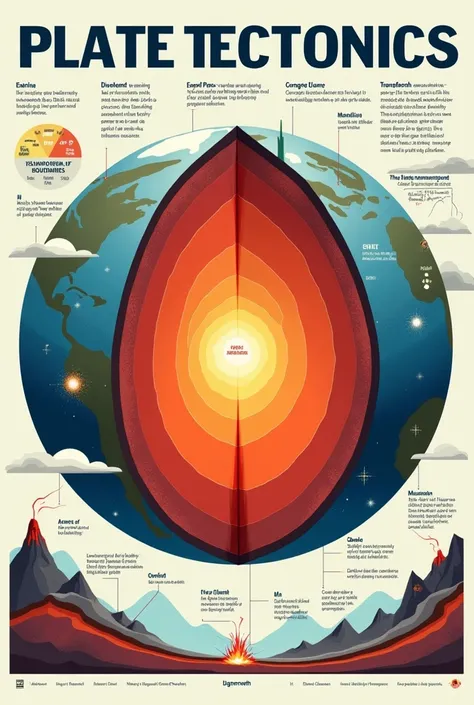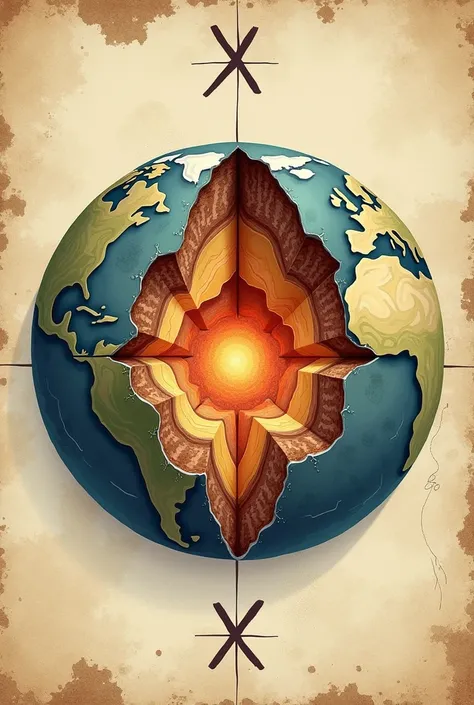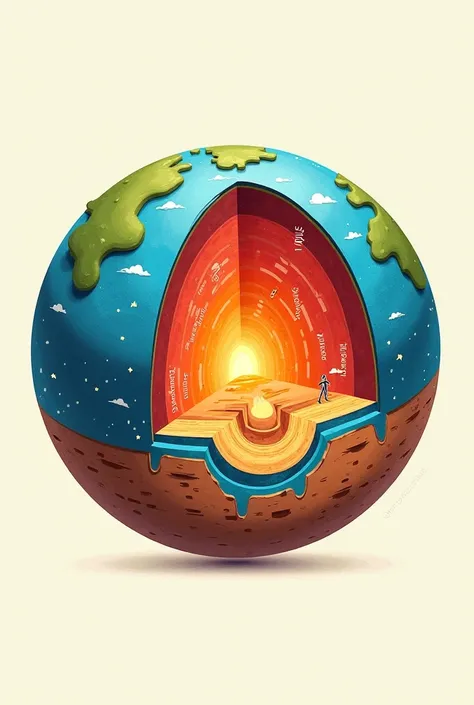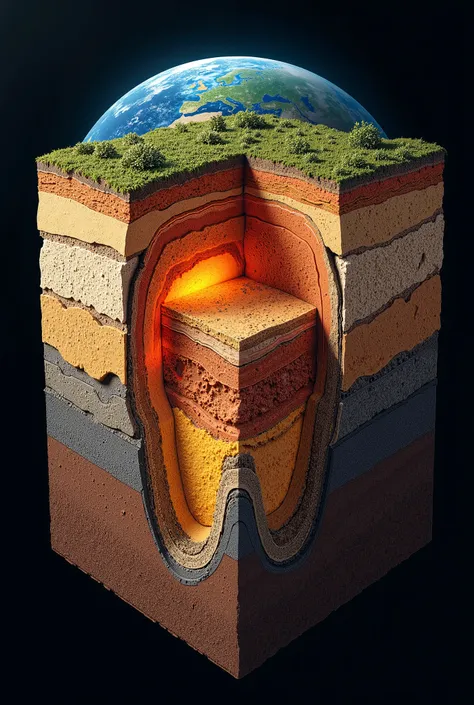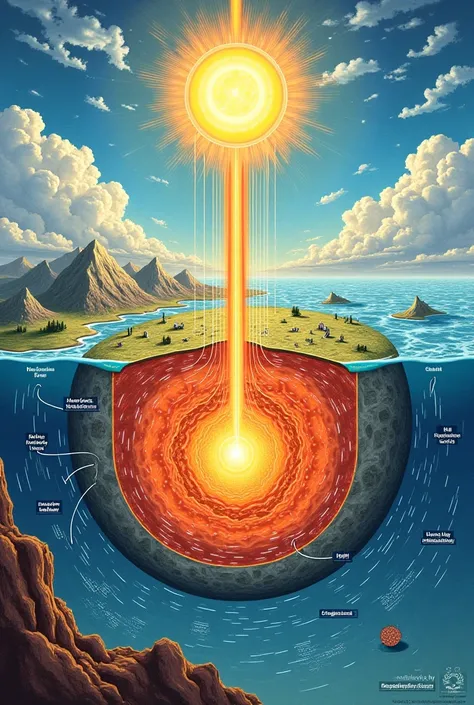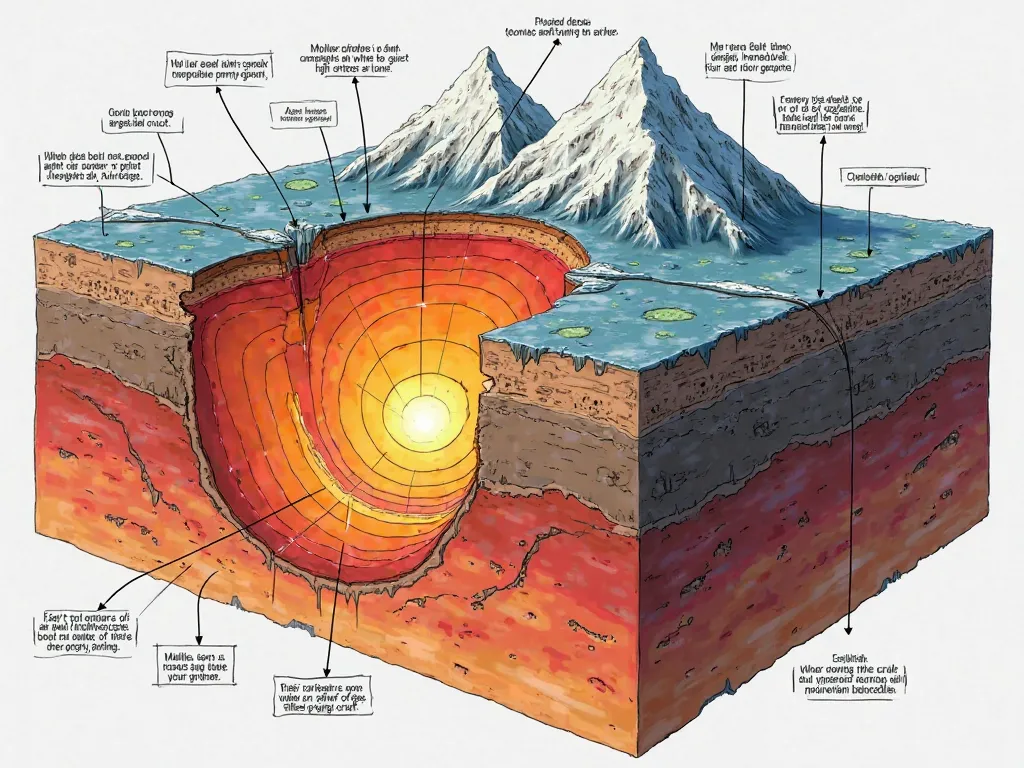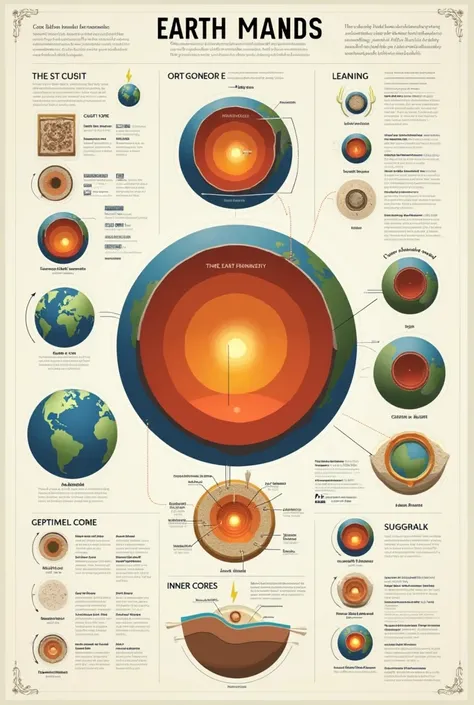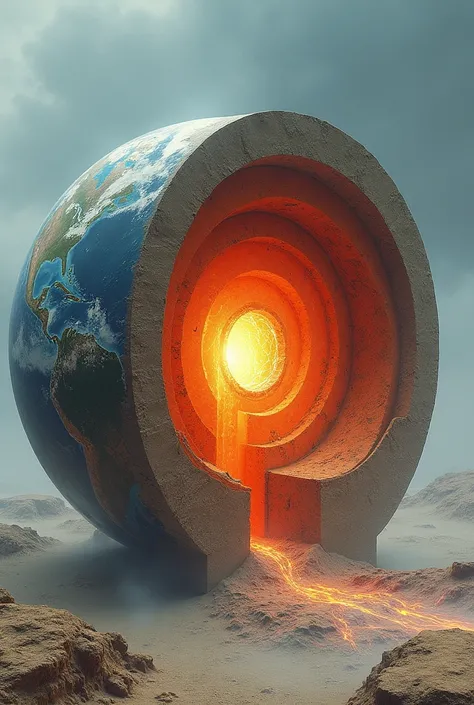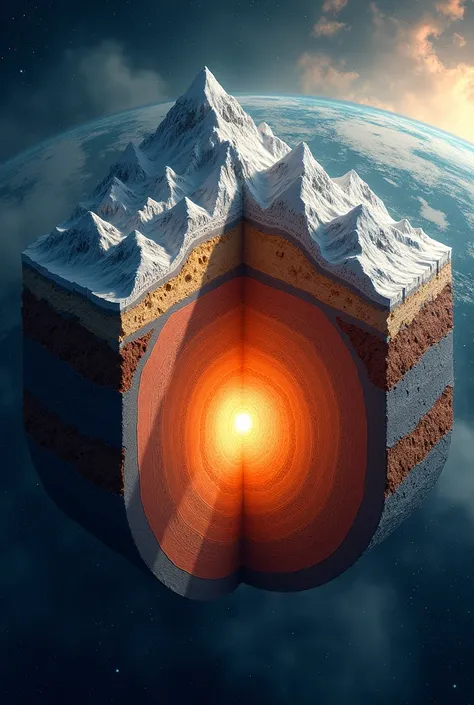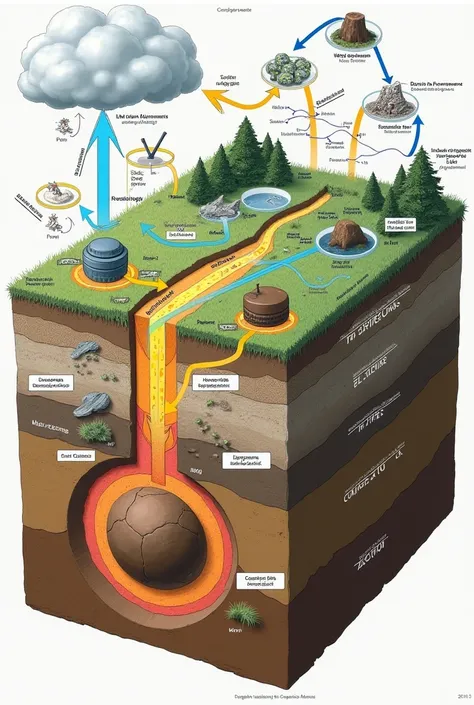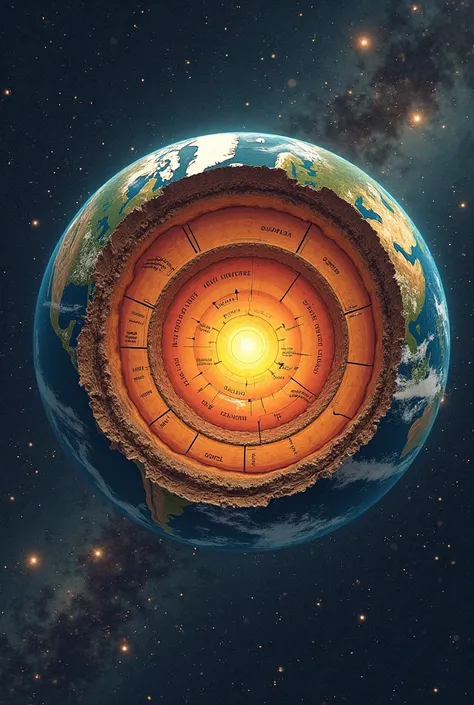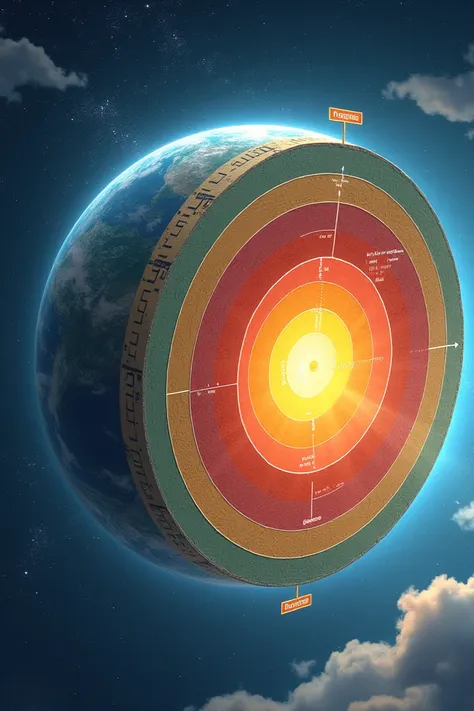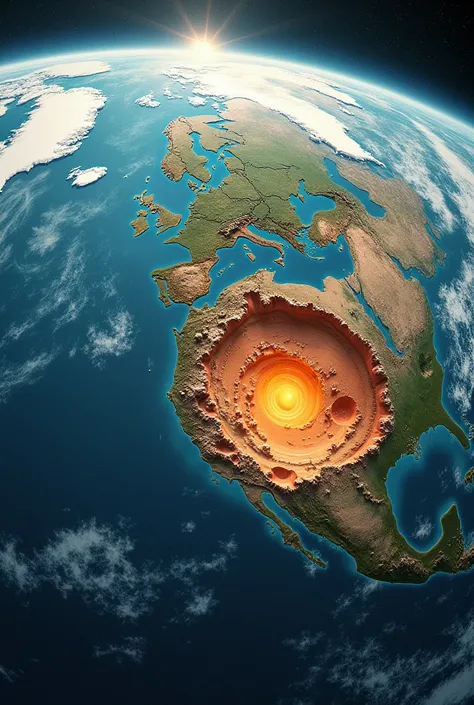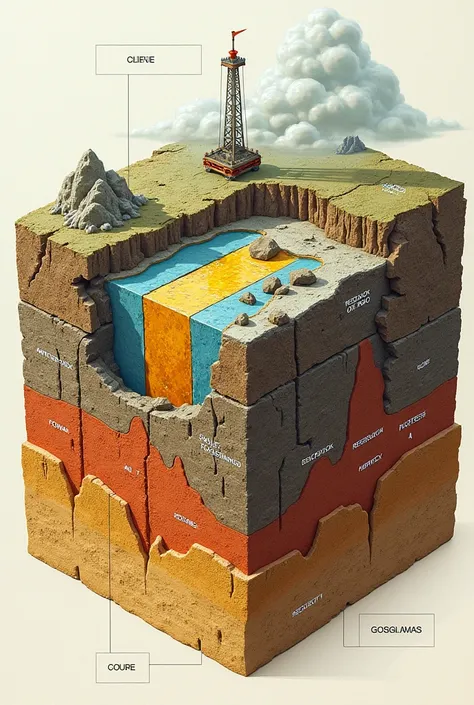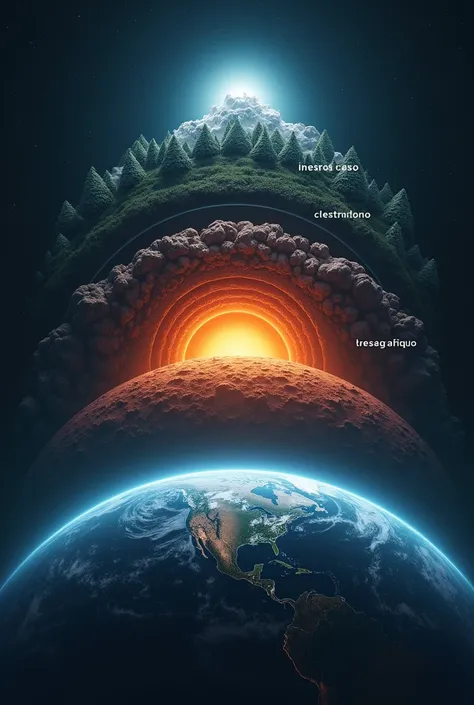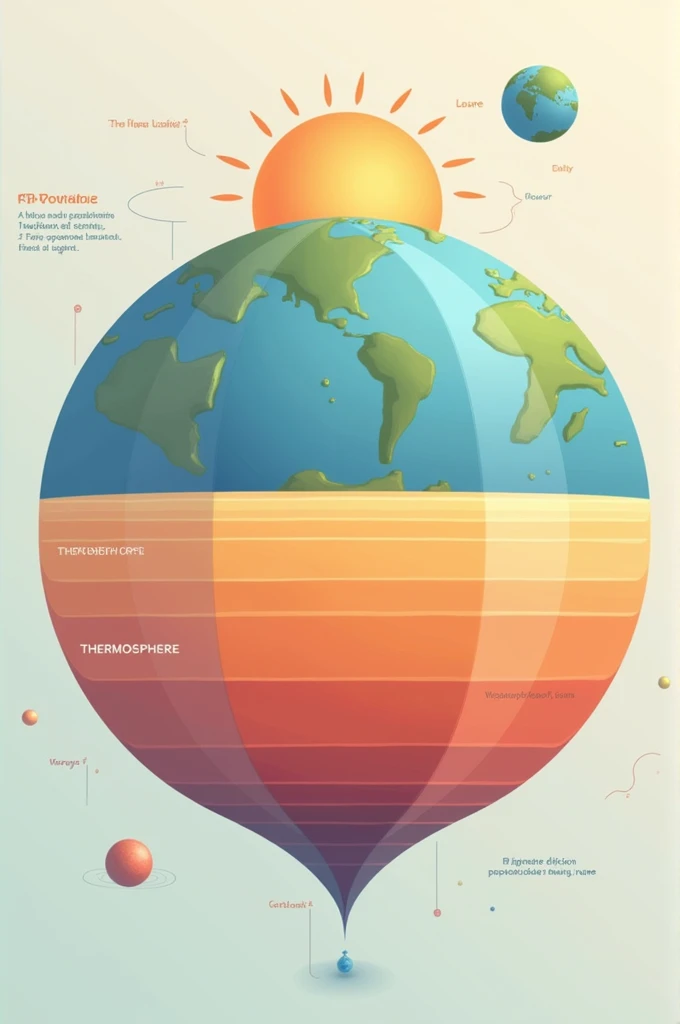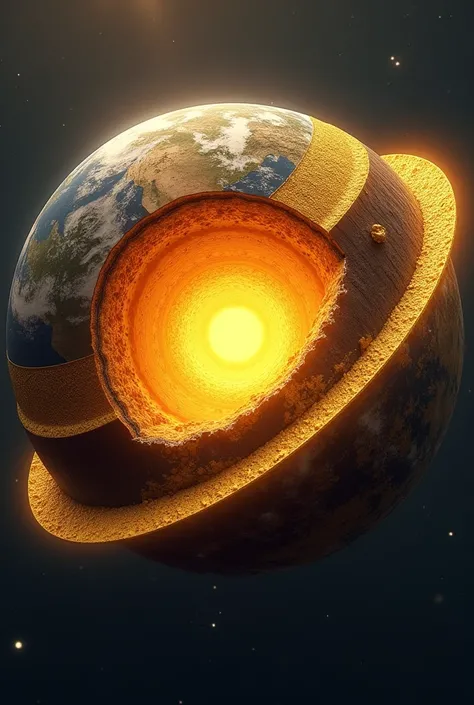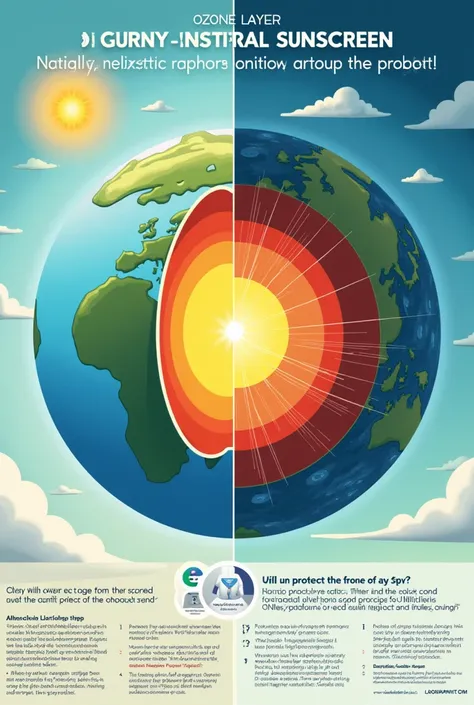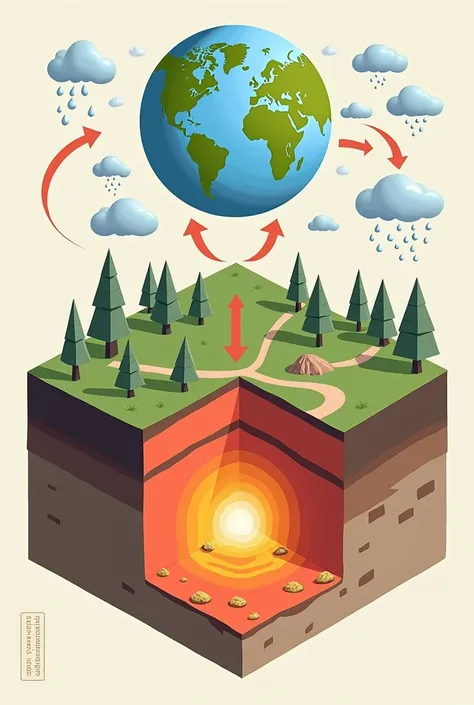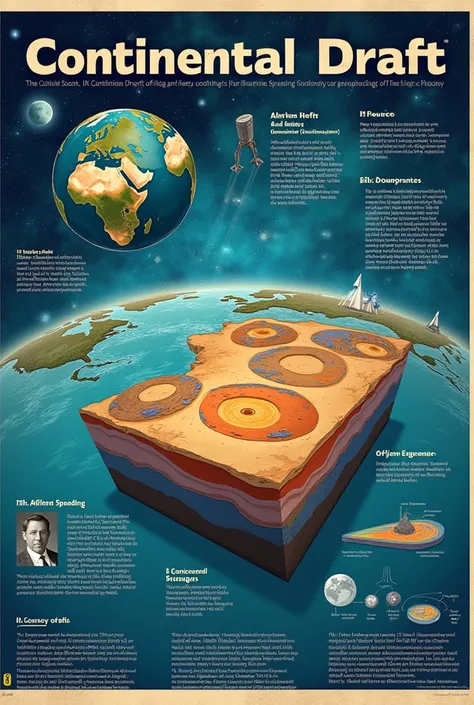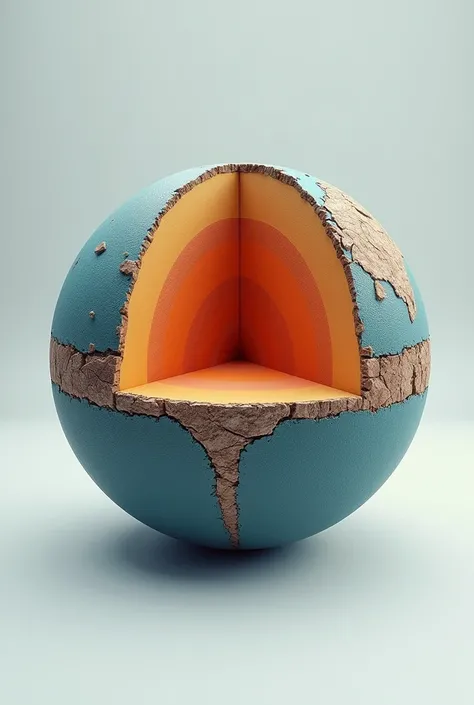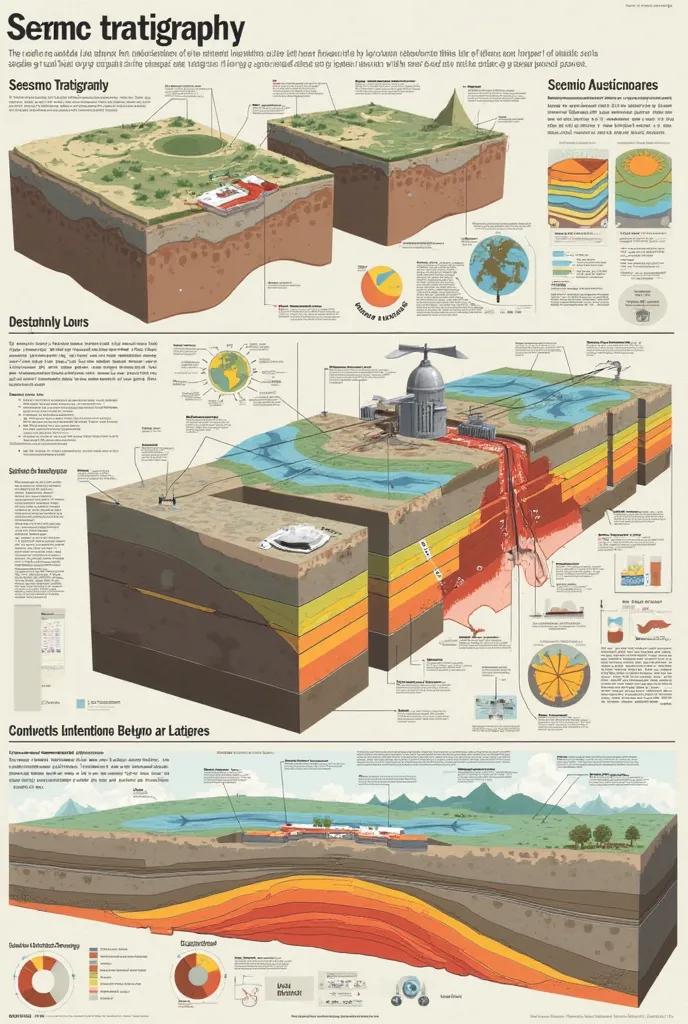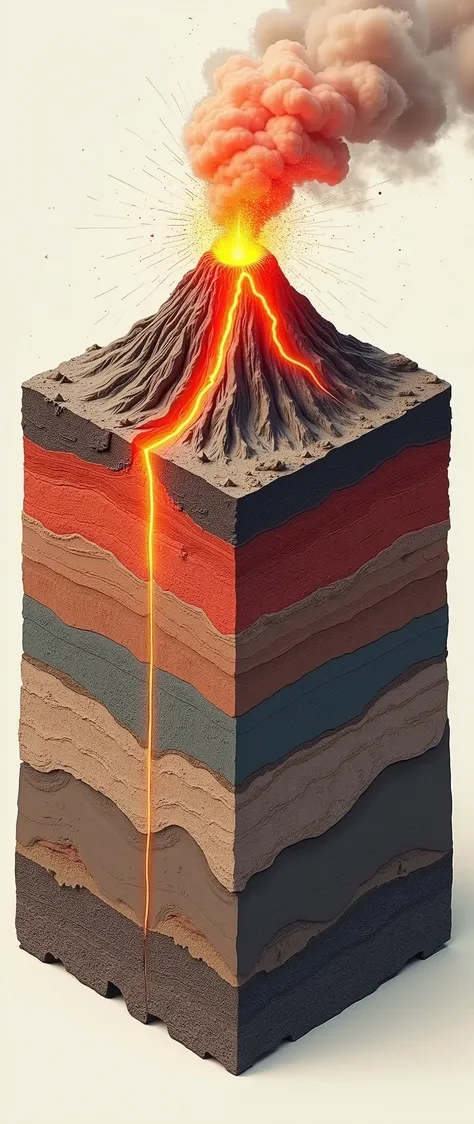The oldest known rocks are 4.000 a 3.800 million years, and are found in Canada
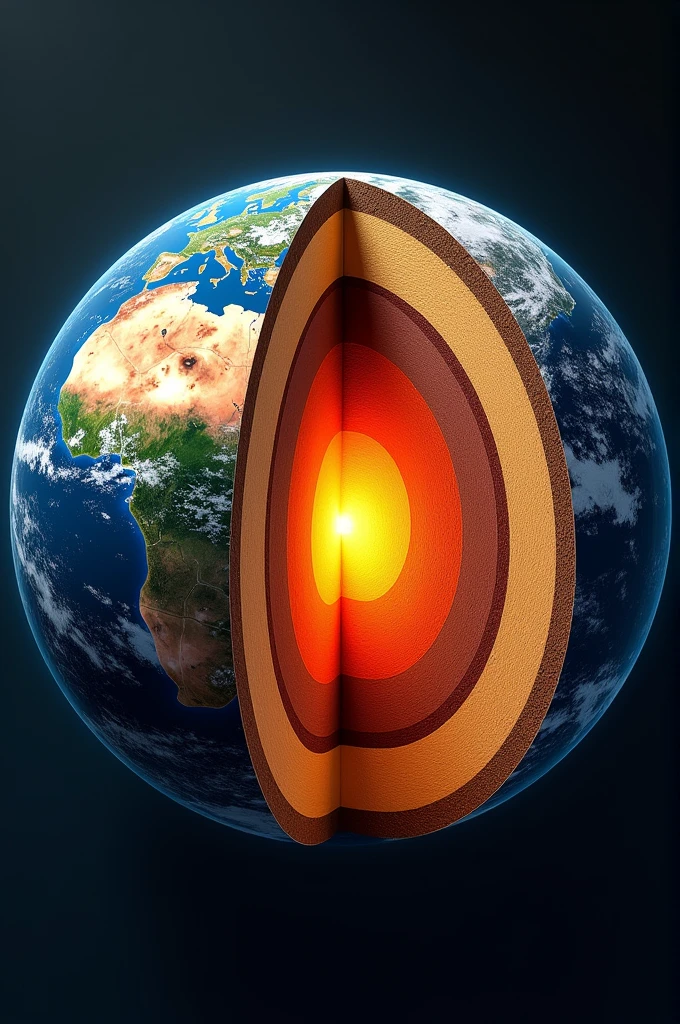

The oldest known rocks are 4.000 a 3.800 million years, and are found in Canada and Greenland. the earth, with an average radius of 6.371 km, It is made up of four main parts: Inner Core, Outer Core, Mantle and Crust; These layers formed when the Earth began to cool and the heavier, warmer materials sank., concentrating on the center. Figure 1 illustrates a section of the Earth, where you can see the different parts that compose it. Earth Section Figure 1: Earth's Core Cut, located in the central part, It has an internal layer of solid and dense material, llamado Inner Core; while the outer part, composed of molten rock, se la conoce como Outer Core. The Mantle has a thickness of approximately 2.900 km and is made up of different types of rocks. At certain depths, rocks behave as a viscoelastic medium capable of plastic flow., due to the partially molten state of the rocks; On the other hand, As the depth increases, the medium becomes more rigid.. The outermost layer of the Earth is the Crust. You could say it's like "the shell" of the globe, due to its reduced thickness in relation to the radius of the Earth. The characteristics of the crust are considerably different in the oceans than on the continents.. The Oceanic Crust is made up of very resistant basaltic rocks., with thicknesses varying between 5 and 10 km, While the continental shelves have a lower density than the previous ones, they are formed mainly by granitic rocks on a base of basalt, with an average thickness of 35 km that can reach a maximum of 75 km. The Earth's crust is deformed, folded and fractured due to thermal convection currents originating in the mantle, which explains the irregular character of the earth's surface. The division between the mantle and the crust is
Prompts
Prompts kopieren
The oldest known rocks are 4
.
000 a 3
.
800 million years
,
and are found in Canada and Greenland
.
the earth
,
with an average radius of 6
.
371 km
,
It is made up of four main parts: Inner Core
,
Outer Core
,
Mantle and Crust
;
These layers formed when the Earth began to cool and the heavier
,
warmer materials sank
.,
concentrating on the center
.
Figure 1 illustrates a section of the Earth
,
where you can see the different parts that compose it
.
Earth Section Figure 1: Earth'
;
s Core Cut
,
located in the central part
,
It has an internal layer of solid and dense material
,
llamado Inner Core
;
while the outer part
,
composed of molten rock
,
se la conoce como Outer Core
.
The Mantle has a thickness of approximately 2
.
900 km and is made up of different types of rocks
.
At certain depths
,
rocks behave as a viscoelastic medium capable of plastic flow
.,
due to the partially molten state of the rocks
;
On the other hand
,
As the depth increases
,
the medium becomes more rigid
..
The outermost layer of the Earth is the Crust
.
You could say it'
;
s like "the shell" of the globe
,
due to its reduced thickness in relation to the radius of the Earth
.
The characteristics of the crust are considerably different in the oceans than on the continents
..
The Oceanic Crust is made up of very resistant basaltic rocks
.,
with thicknesses varying between 5 and 10 km
,
While the continental shelves have a lower density than the previous ones
,
they are formed mainly by granitic rocks on a base of basalt
,
with an average thickness of 35 km that can reach a maximum of 75 km
.
The Earth'
;
s crust is deformed
,
folded and fractured due to thermal convection currents originating in the mantle
,
which explains the irregular character of the earth'
;
s surface
.
The division between the mantle and the crust is
Info
Checkpoint & LoRA

Checkpoint
SeaArt Infinity
#SeaArt Infinity
0 Kommentar(e)
1
0
0









